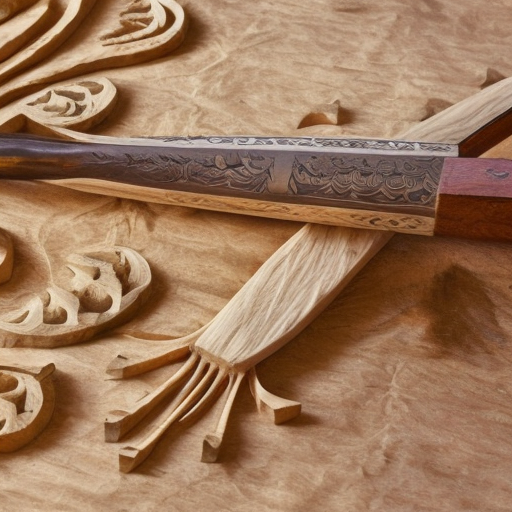Summary:
Wood carving is a traditional art form that involves shaping and sculpting wood into various objects and designs. It has been practiced for centuries and is found in cultures all around the world. Wood carving can range from simple and functional pieces to intricate and decorative works of art. The process of wood carving involves selecting the right type of wood, planning the design, and using various tools to carve, shape, and finish the piece. It requires skill, patience, and attention to detail. Wood carving has both practical and artistic applications and continues to be a popular form of expression and craftsmanship today.
Introduction:
Wood carving is a form of art that involves shaping and sculpting wood into various objects and designs. It is a traditional craft that has been practiced for centuries and is found in cultures all around the world. Wood carving can range from simple and functional pieces, such as utensils and furniture, to intricate and decorative works of art, such as sculptures and reliefs. The process of wood carving requires skill, patience, and attention to detail, as well as a deep understanding of the properties of different types of wood.
The Process of Wood Carving:
Wood carving begins with selecting the right type of wood for the project. Different types of wood have different characteristics, such as hardness, grain pattern, and color, which can affect the carving process and the final result. Common types of wood used for carving include basswood, mahogany, oak, and walnut.
Once the wood is selected, the carver plans the design and marks it on the wood using a pencil or other marking tool. This step is crucial as it helps guide the carving process and ensures the desired outcome. The carver then uses various tools to remove excess wood and shape the piece. These tools can include chisels, gouges, knives, and mallets. The choice of tools depends on the complexity of the design and the desired level of detail.
As the carving progresses, the carver pays close attention to the wood’s grain and texture, using them to enhance the overall design. The process requires precision and control to create smooth curves, intricate details, and a balanced composition. The carver may also use sandpaper or other abrasive materials to refine the surface and achieve a polished finish.
Applications of Wood Carving:
Wood carving has both practical and artistic applications. In practical terms, wood carvings can be used to create functional objects such as utensils, furniture, and architectural elements. These pieces often combine beauty and utility, showcasing the carver’s skill and craftsmanship.
In the realm of art, wood carving allows for the creation of intricate sculptures, reliefs, and decorative objects. Wood sculptures can range from small figurines to life-size statues, depicting human figures, animals, or abstract forms. Reliefs, on the other hand, involve carving designs or scenes into a flat surface, creating a three-dimensional effect. Decorative objects, such as carved panels, frames, and boxes, showcase the beauty of wood carving as an art form.
Wood carving is also used in cultural and religious contexts. Many cultures have a long history of wood carving as a means of expressing their traditions, beliefs, and stories. Wood carvings can be found in temples, churches, and other sacred spaces, serving as symbols of devotion and spirituality.
Conclusion:
Wood carving is a traditional art form that involves shaping and sculpting wood into various objects and designs. It requires skill, patience, and attention to detail. Wood carving has both practical and artistic applications and is found in cultures all around the world. The process of wood carving involves selecting the right type of wood, planning the design, and using various tools to carve, shape, and finish the piece. From functional objects to intricate sculptures and reliefs, wood carving continues to be a popular form of expression and craftsmanship today.












